- Home
- >
- Preservation Archaeology Blog
- >
- Hands-On Archaeology: Winter Count 2025
(April 7, 2025)—As some of you know from my previous posts about this seriously earthy event, Winter Count is an ancient/ancestral skills gathering that has been happening in Arizona’s Sonoran Desert for the past 30 years. I’ve attended as many as I could over the past two decades. Many of the skills I teach in my Hands-On Archaeology classes I learned or refined at Winter Count.
This was my first year as a teacher!
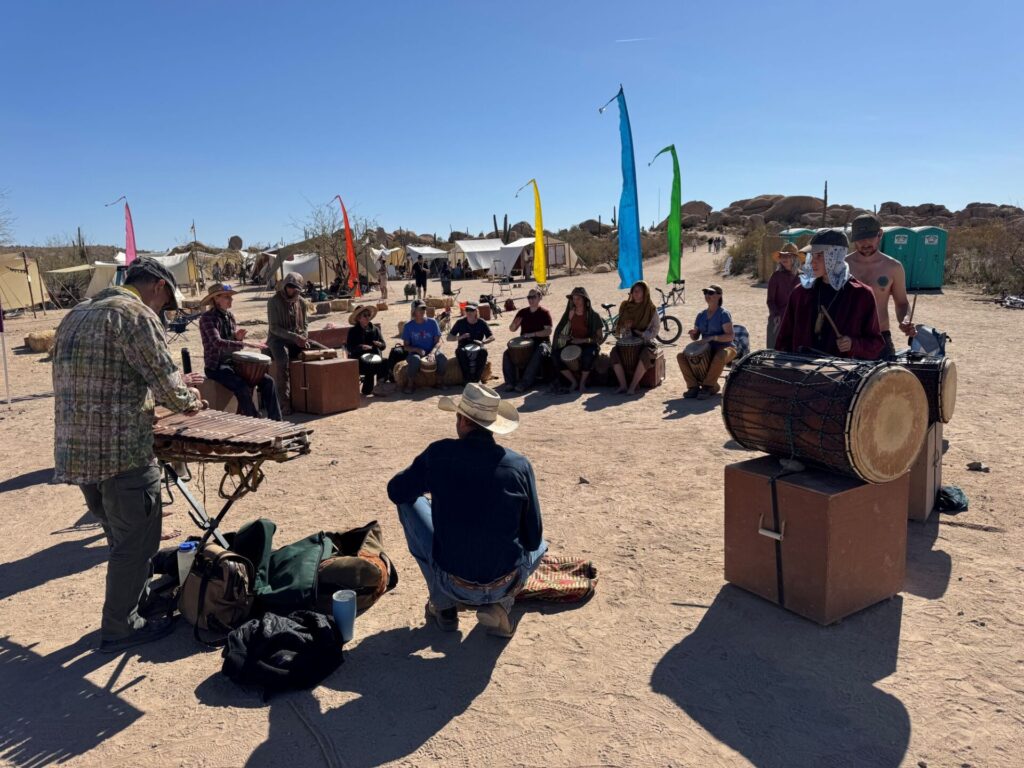
I taught shell etching as known from the Hohokam archaeological tradition; carving knife handles from saguaro ribs and other Sonoran woods; making composite beads; and using and ethically harvesting lac, a natural adhesive excreted by insects.
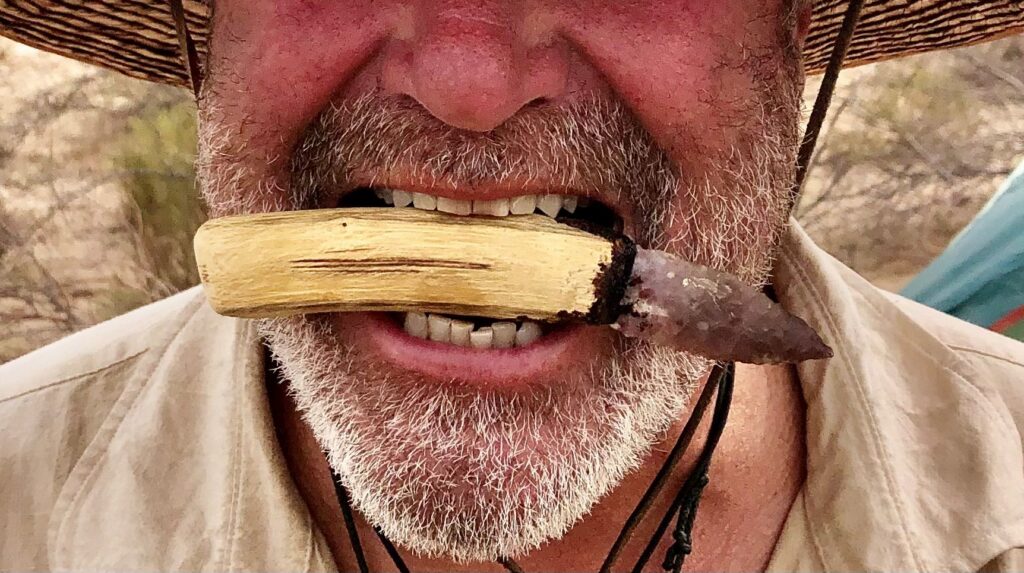
From my last post, or if you’ve taken my recent classes, you may have gathered that I have become a LAC ENTHUSIAST, and my offerings at this Winter Count reflected that.
Some other skills shared by folks at this session included atlatl making, basketry, making and hunting with rabbit sticks, flintknapping, bow-and-arrow technology, pottery, hide tanning, animal tracking, desert awareness, and identifying and using medicinal plants. And that’s just a fraction of what might be on offer from year to year.
Shell Etching
In this gathering, we used ground lac melted into alcohol (ancestral peoples had plenty of ways to make that compound) to create the resist. We then etched the painted shells in strong acid. Next, we rubbed the lac paint off and rubbed mineral and other natural stains into the shell.
Here’s a fellow traveler painting with lac to create the resist.
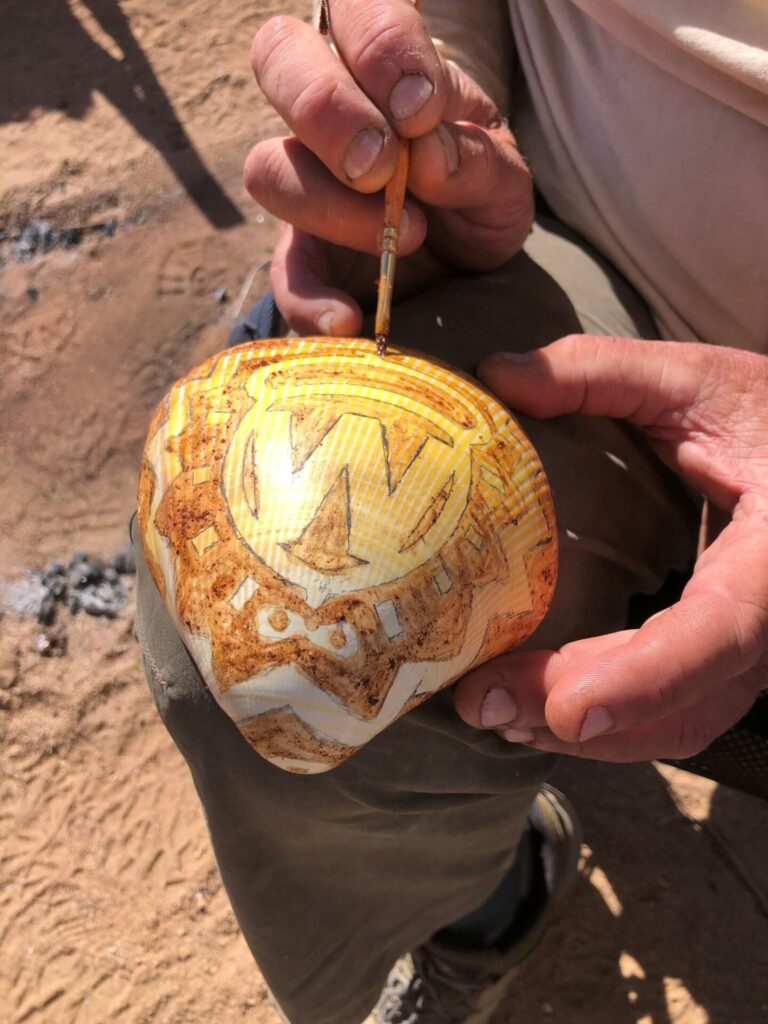
Here’s an example rubbed with cochineal dye after the etching.
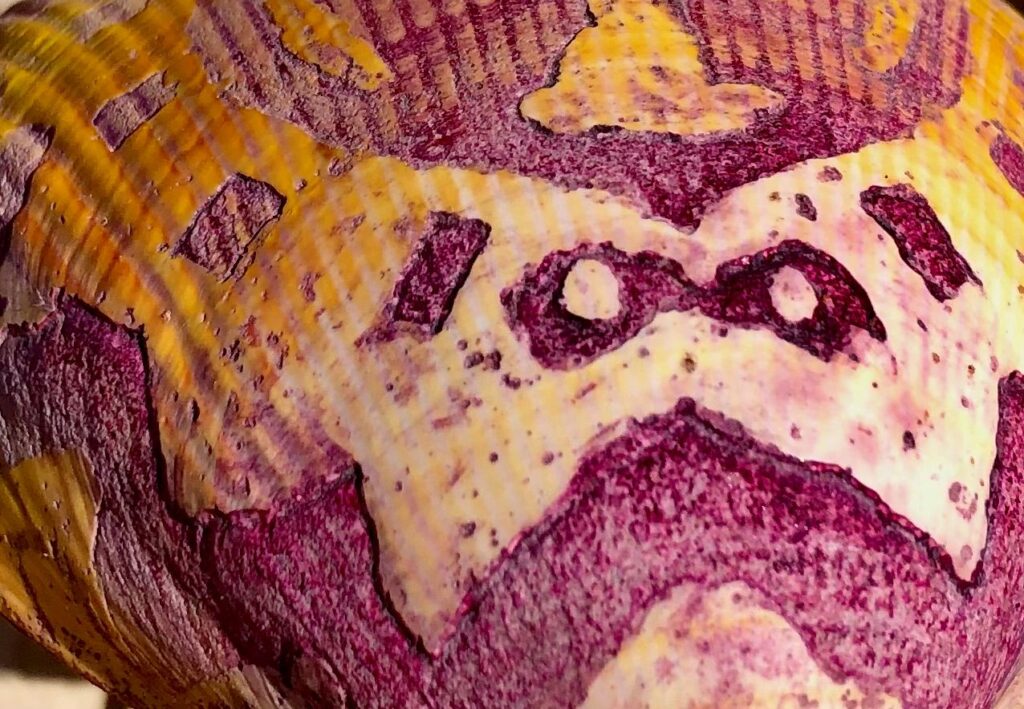
These are some examples of what our group created by rubbing with ochre after the etching.
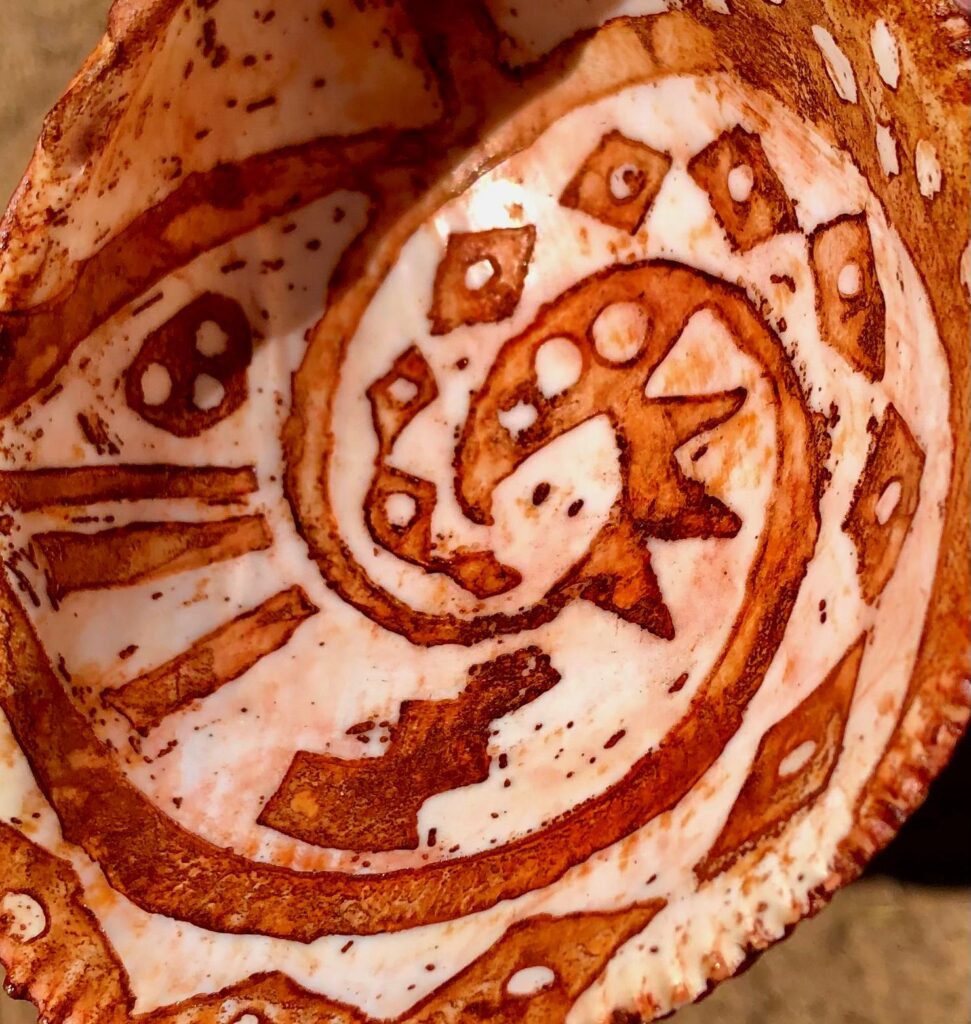
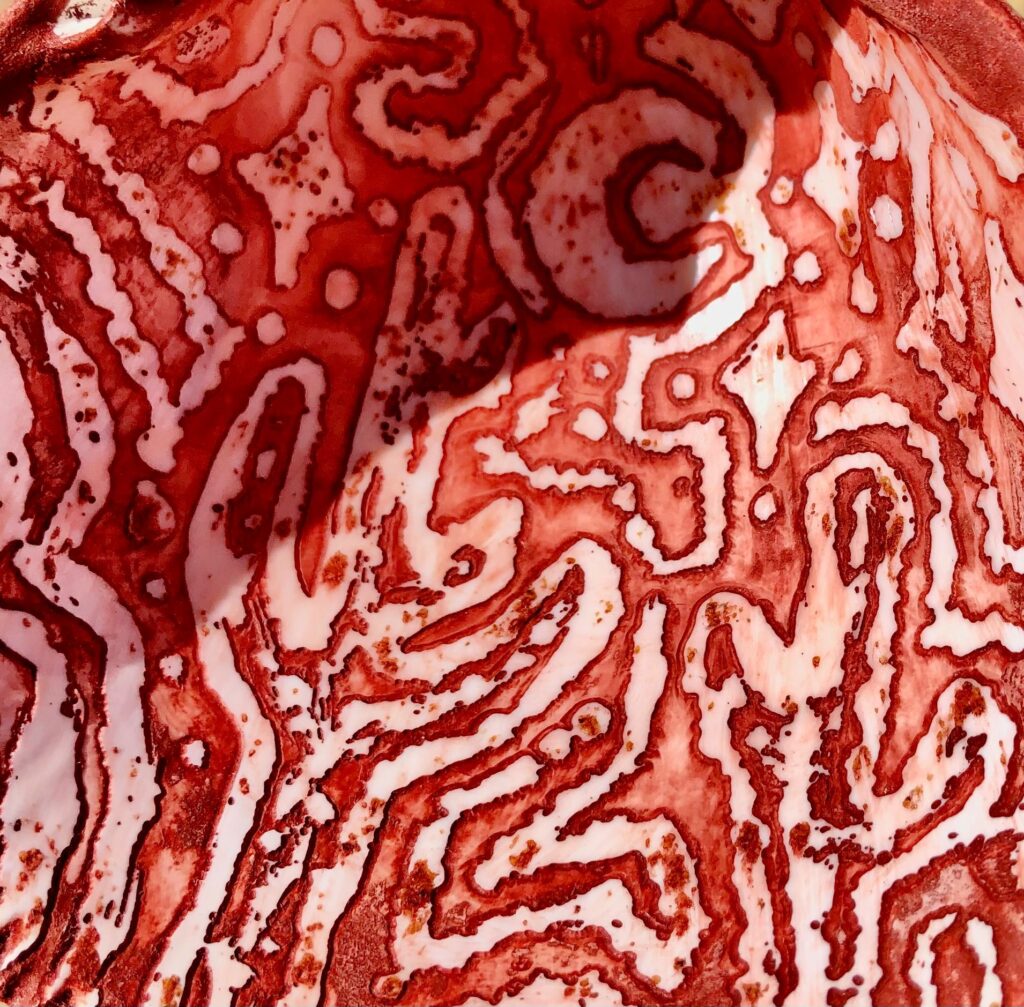
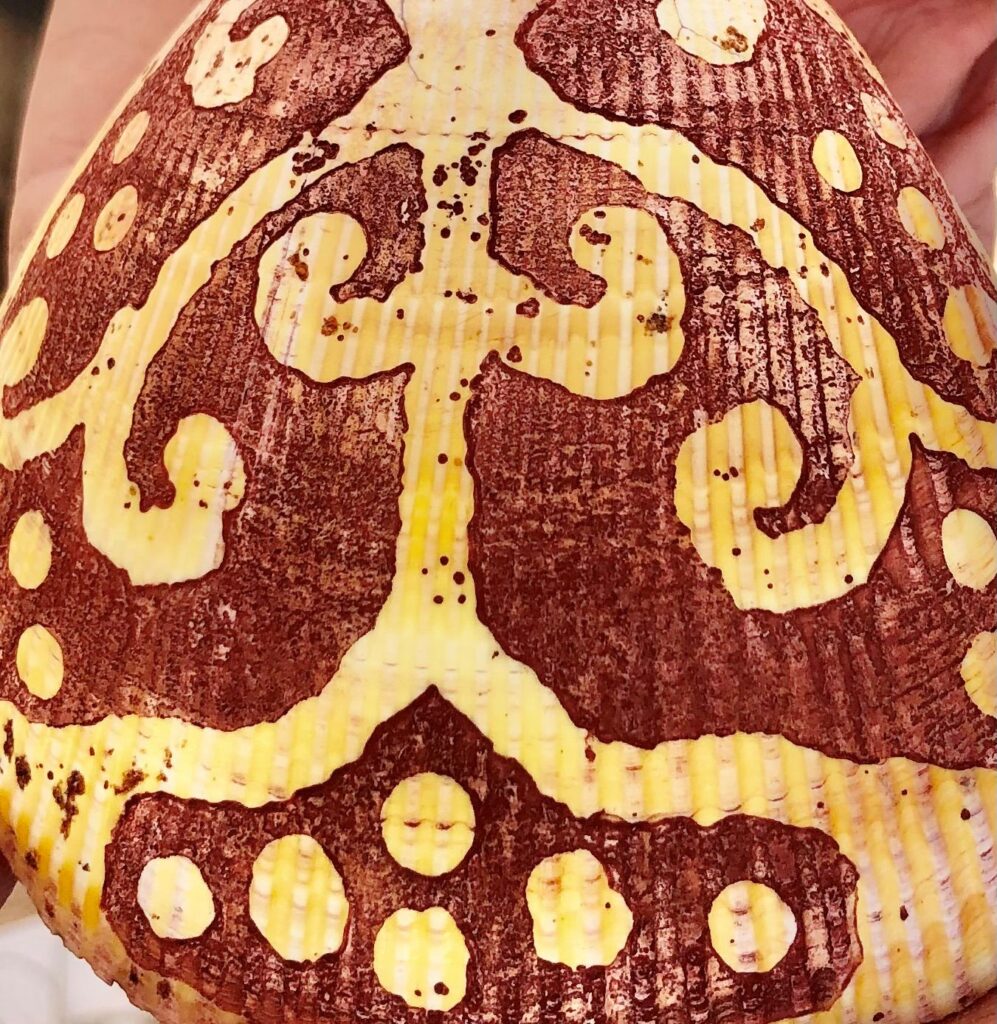
Knife Handles
My students carved their handles solely with stone tools. I have done this with our field school students and with our staff members on a group retreat, and everyone gets into this kind of whittling. We used lac to adhere the flaked-stone blades into the handle; previously, I taught folks using a conifer pitch-dung paste that is also evidenced in the archaeological record.
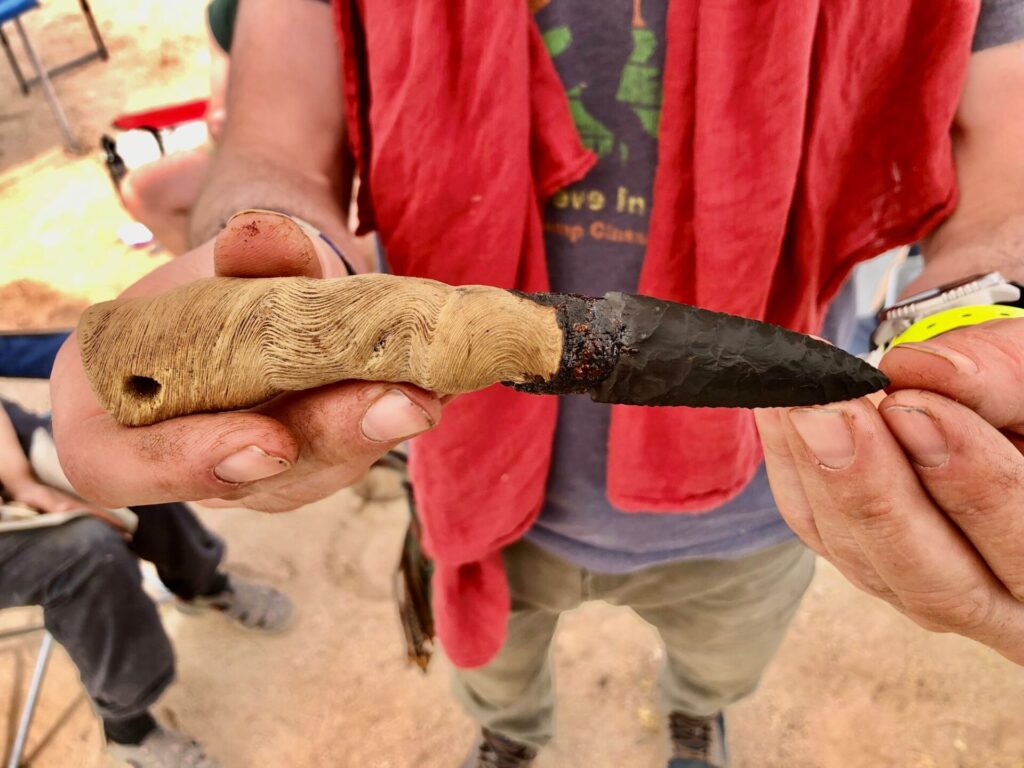
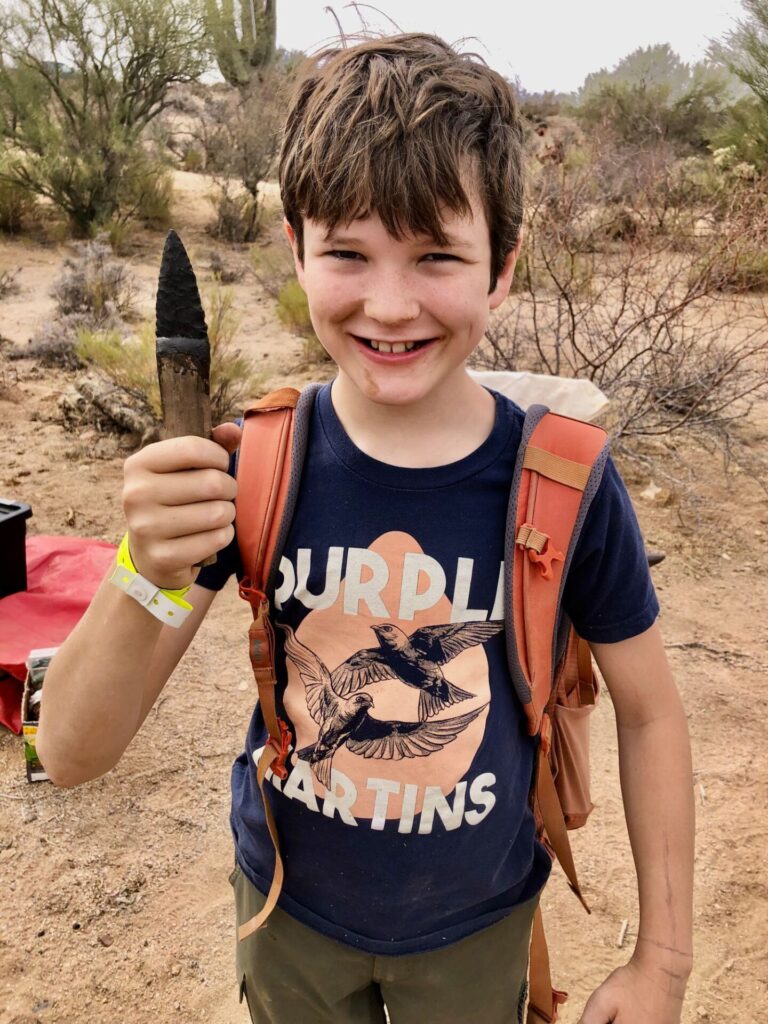
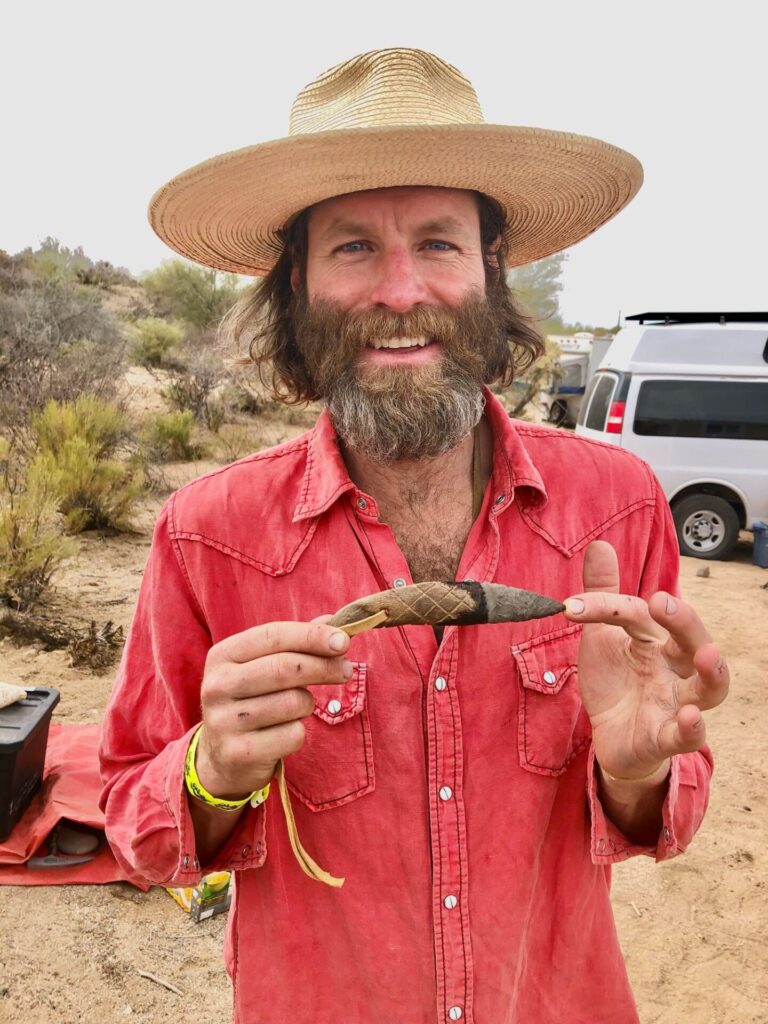
Composite Beads
For this experience, students chose small slabs of colorful stones. We made bead blanks and adhered them to a slab of rock so that we could drill through them more easily. Once drilled, we used the lac to adhere the aligned blanks together, and then we ground those stacks into composite beads.
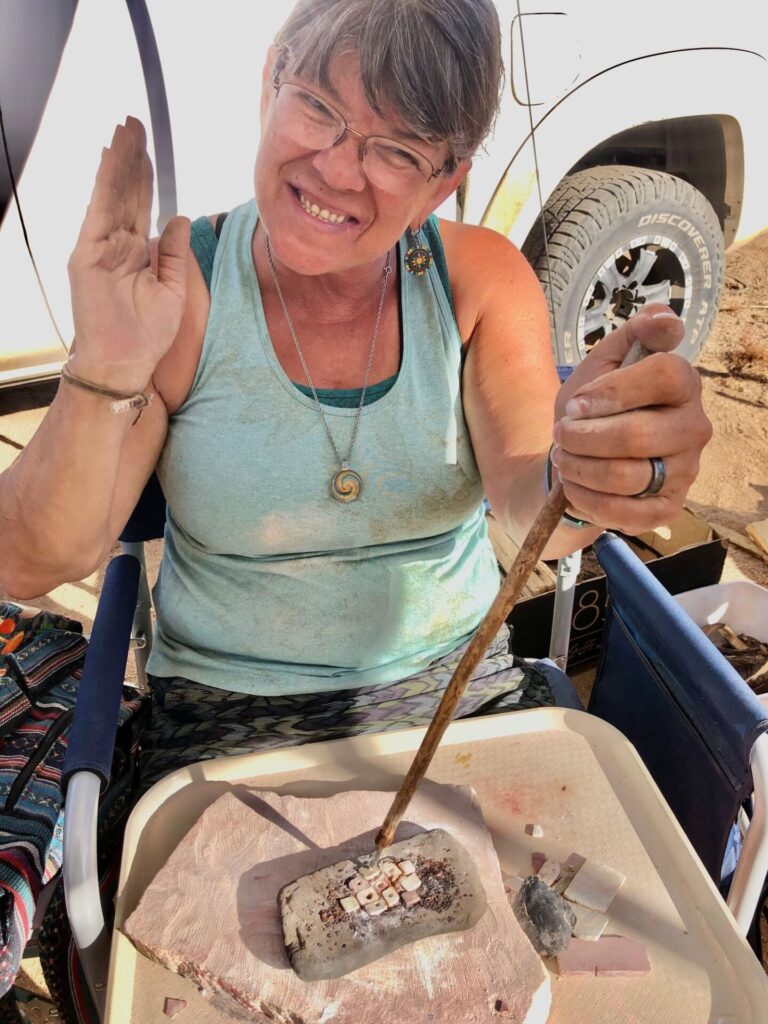
Here are some examples my students made. We decided not to remove the lac adhesive after grinding them into shape. They looked great!
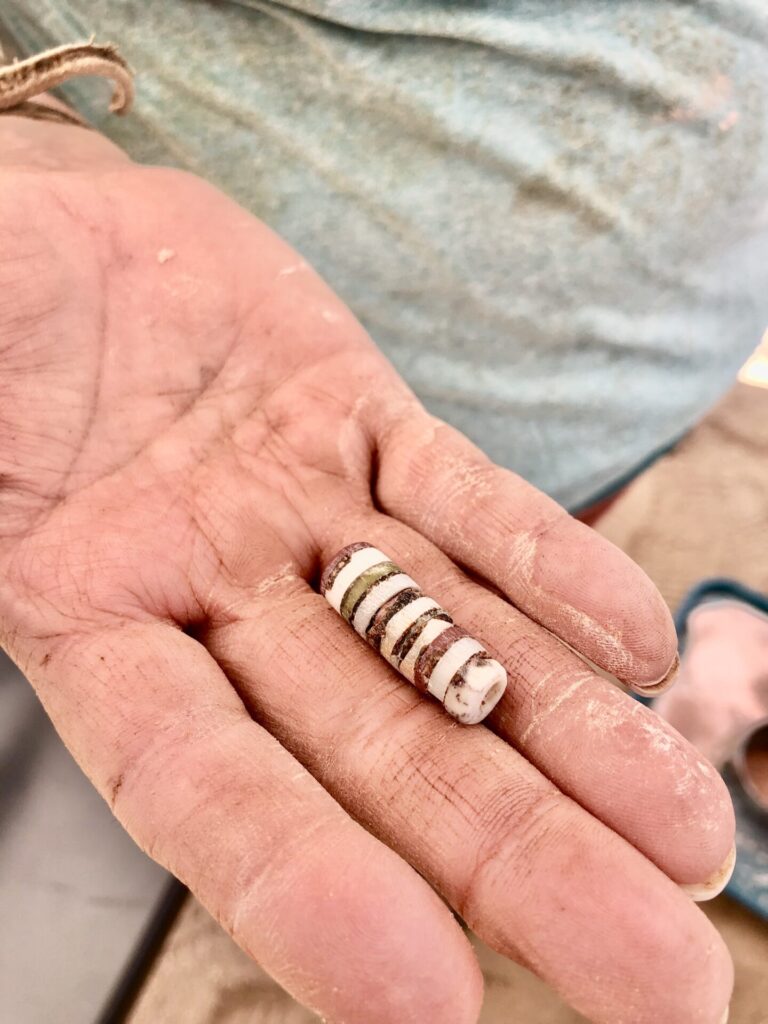

More Lac to Come
My next few posts will be deep dives into how people used lac, the amazing mystical mastic! Stay tuned.